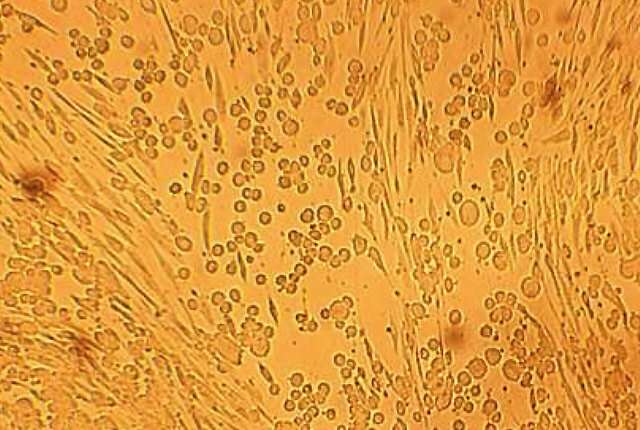Lines blurring between human herpes simplex viruses

The line between the human herpes simplex viruses—HSV-1 and HSV-2—is blurrier than previously thought, according to a new study published this week in the Journal of Infectious Diseases.
Researchers found that HSV-1 and HSV-2 are mixing together to result in several new, different recombinant versions of herpes.
"The main implication is that HSV-1 and HSV-2 are continuing to recombine," said lead author Dr. Amanda Casto, a senior fellow in infectious diseases at the University of Washington School of Medicine. "This could have important implications for HSV vaccine development, because it means a live HSV-2 vaccine could recombine with circulating HSV-1 strains, thereby forming an infectious virus."
HSV-1 and HSV-2 are two of the most common viruses affecting people. Moreover, humans are the only mammals that have two types of herpes simplex viruses.
Both viruses look alike clinically and are sensitive to the same drug, acyclovir. But they are genetically different. HSV-1 most commonly affects the mouth, while HSV-2 usually causes genital lesions.
More than two-thirds of the world's population is estimated to be infected with one or both viruses, according to the World Health Organization
Both HSV-1 and HSV-2 cause incurable, lifelong infections. These infections can be completely asymptomatic or lead to intermittent symptoms, which can be treated with medications.
Not much progress, however, has been made in preventing herpes.
"Herpes is one of the most stigmatized diseases out there, and yet it affects billions of people," said co-author Dr. Alexander Greninger, assistant professor of laboratory medicine at the University of Washington School of Medicine and assistant director of the UW Medicine Clinical Virology Laboratory. "We really need more work to combat this virus."
Casto explained that HSV-1 and HSV-2 diverged from one virus some 6 million years ago when humans diverged from chimps. After HSV-2 jumped back into humans about 1.6 million years ago, humans were left with two types of herpes simplex viruses. While there is evidence suggesting ancient recombination between HSV-1 and HSV-2, this study finds evidence for on-going recombination in humans today.
Though HSV-1 classically causes oral lesions and HSV-2 genital lesions, genital herpes due to HSV-1 is becoming increasingly common. The authors speculate that by leading to more genital HSV-1/HSV-2 coinfections this trend could result in the creation of more HSV-1/HSV-2 recombinant viruses.
In an accompanying editorial, Dr. Scott Schmid of the Centers for Disease Control and Prevention, Division of Viral Diseases, said the study greatly expands knowledge of these viruses.
"These fascinating new insights into the dynamic interaction between two common human herpesvirus infections provide fresh concepts into how these complex viruses can maximize variation and thus continue their eons-old balance of power with their hosts," he wrote.
More information: Amanda M Casto et al, Large, stable, contemporary interspecies recombination events in circulating human herpes simplex viruses, The Journal of Infectious Diseases (2019). DOI: 10.1093/infdis/jiz199


















